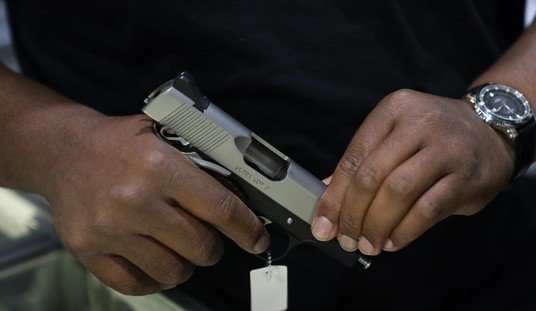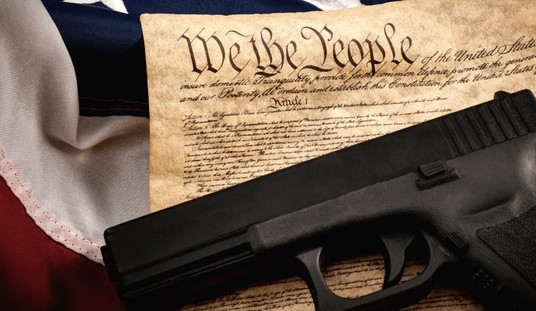The case formerly known as Todd Yukutake, et al v. Clare Connors, et al, was a victory for residents of the Aloha State when a favorable decision for Yukautake et.al. was delivered August of 2021 from the United States District Court For the District of Hawaii. We’ve been following the progress of this case, as well as many others, as earlier this year I reported that Hawaii was doubling down and appealing the decision. The conflict was/is that of Hawaii’s unconstitutional permitting laws that required registrants to bring their firearm for inspection of and registration by their local issuing authority, and said permits having only a life expectancy of 10 days. Major portions of that were struck down and the ruling class in Hawaii were not happy.
How the state wishes to squirm out of the box they’ve painted themselves into is going to be fun to watch. As I stated several months ago pre NYSRPA v. Bruen, perhaps like the Great Bambino calling his shot, I noted:
While Shikada was on the topic of ignoring case law, we did not get any details about how Hawaii and multiple jurisdictions through the Union ignore Heller on the regular, picking what they want from the opinion. We can only speculate who and which bad actors are going to stick their head in the sand when NYSRPA delivers a headshot to the anti-freedom caucus’s arguments.
On September 16th a supplemental brief was filed in the 9th Circuit court of Appeals by Yukutake et.al.’s attorneys, Alan Beck and Stephen Stamboulieh. The brief completely eviscerates any argument that Shikada, the present Attorney General of Hawaii might have. The brief summons the wisdom of NYSRPA v. Bruen within.
New York State Rifle & Pistol Ass’n v. Bruen, 142 S. Ct. 2111 (2022) has strengthened Plaintiffs Claims and made it even clearer that the challenged laws are unconstitutional. In Bruen, the Supreme Court streamlined the existing process for evaluating Second Amendment claims. It removed the second step of the two-step analysis that this and other courts previously used to evaluate Second Amendment claims and provided guidance on how to evaluate Second Amendment claims going forward. Bruen, 142 S. Ct. at2127. Even under the prior framework employed by this Circuit, the trial court correctly found that both laws at issue in this litigation violated the Second Amendment Despite applying intermediate scrutiny. This is because Hawaii failed to produce any evidence to justify its laws. “Needless to say, a State that offers ‘no evidence or anecdotes in support of [a] restrictions should not prevail under intermediate scrutiny. (Silvester v. Becerra,138 S. Ct. 945, 949 (2018) (quoting Florida Bar v. Went For It, Inc., 515 U. S. 618, 628, 115 S. Ct. 2371, 132 L. Ed. 2d 541 (1995))”Case: 21-16756, 09/16/2022, ID: 12542590, DktEntry: 50, Page 7 of 36 2(Thomas, J., dissenting from denial of certiorari).Post-Bruen, that result is now glaringly obvious. Both H.R.S. §134-2 and H.R.S. §134-3 violate the Second Amendment was held by the trial court.
We can only hope that Beck and Stamboulieh’s arguments will hold up in the 9th Circuit, as they did in the lower court. Even prior to NYSRPA v. Bruen, the matter was settled as being unconstitutional with some relief being delivered to the plaintiffs and Hawaii residents at large. Although, we are talking about the 9th Circuit, the one that relies on public sentiment revolving around progressive ideals, rather than originalism or whether or not something is inherently constitutional or not.
This controversy is ripe for continued challenge. To impose such restrictions on those who wish to simply purchase and keep an arm, nevermind bear, goes beyond the scope of what’s reasonable. Luckily, several organizations have stepped up in filing friend of the court briefs on this case.
The Second Amendment Foundation (SAF) and Madison Society filed a brief back in May. In the introduction to their brief, they very entertainingly get to the core of the issue.
This is a case where a state-actor purports to comply with the Constitution’s text and Supreme Court caselaw, while intentionally undermining the fundamental right at issue. In fact, Hawaii is only engaged in a kind of malicious compliance.
Hawaii has erected nonsensical hoops for gun-buyers to jump through to exercise a fundamental right. The passive-aggressive regulations at issue in this case are mirrored by remarkably similar barriers to voting that were struck down by the Supreme Court more than 50 years ago.
SAF founder and Executive Vice President Alan M. Gottlieb remarked when making a statement that if this were any other constitutional right that everyone would be up in arms over the controversy.
“The requirements to merely buy a handgun are solely designed to discourage Hawaii citizens of doing so. The two Hawaii requirements are disgustingly obvious in their intent, which is why the District Court found for plaintiffs Todd Yakutake and David Kikukawa.”
He noted the District Court “found that Hawaii had failed to produce any evidence to justify its scheme under any standard of review.”
“It is alarming,” Gottlieb observed, “that such statutory requirements to impede and discourage gun ownership exist anywhere in the country. Hawaii’s gun control scheme is deliberately complicated, and ultimately frustrating. It cannot be allowed to stand.”
The National Rifle Association also filed a brief of their own.
Acquiring a firearm in the Aloha State is an unnecessarily complicated process. Hawaii laws impose many repetitive steps and short deadlines on those who wish to exercise their Second Amendment rights. Two of those laws are chal-lenged here. The first is a provision of Hawaii’s permit-to-purchase-a-firearm statute that puts a 10-day expiration date on all permits to purchase handguns, and the second is a provision of the registration statute that requires the firearm be brought to the police station within five days of acquisition for inspection. These provisions were not passed to redress any problem. Instead, they were passed solely to “con-trol” how people exercise their Second Amendment rights.
Even worse, Hawaii submitted no evidence supporting either of these provi-sions. Instead, it argues that the provisions should be upheld by “common sense” alone. Common sense—not to mention Supreme Court precedent—says that when the people declared that the right to keep and bear arms “shall not be infringed,” they gave the government a heavier burden. Hawaii did not meet its burden. The district court correctly found the two statutes to be unconstitutional, and this Court should affirm.
William J. Olsen, P.C., Attorneys at Law filed a brief for a number of Second Amendment related organizations. As noted in the brief, they represented the interests of the following groups: Gun Owners of America, Inc., Gun Owners Foundation, Gun Owners of California, Heller Foundation, Oregon Firearms Federation, Tennessee Firearms Association, Virginia Citizens Defense League, Grass Roots North Carolina, America’s Future, Inc., Conservative Legal Defense and Education Fund, and Restoring Liberty Action Committee in Support of Plaintiffs-Appellees and Affirmance.
Although in this case the district court judge reached the correct result applying the Ninth Circuit’s decision in Young v. Hawaii, the Second Amendment should not be subjected to this Court’s convoluted balancing test. As Justice Scalia has explained, “the people” did the balancing when they ratified the Second Amendment, which bars all government infringements. See District of Columbia v. Heller, 554 U.S. 570, 634-35 (2008).
Accordingly, these amici urge this Court to discard its flawed, multi-tiered balancing approach and faithfully apply the Supreme Court’s Heller and McDonald v. Chicago, 561 U.S. 742 (2010) decisions, under which Hawaii’s uniquely restrictive firearms regime must fail.
The controversy does have broader implications, such as permitting as a whole. In 21st Century United States, we already have the NICS system in place, which separates the suitable from the unsuitable persons concerning firearm possession/ownership. In footnote #9 of NYSRPA v. Bruen the topic of “permits” was brought up, with the presumption we’re talking about permits to bear, not keep.
To be clear, nothing in our analysis should be interpreted to suggest the unconstitutionality of the 43 States’ “shall-issue” licensing regimes, under which “a general desire for self-defense is sufficient to obtain a [permit].”
An argument to the contrary would be saccharine, which Beck and Stephen Stamboulieh points out some historical analogue within the supplemental brief.
At the time of the Founding, no training was required to acquire a handgun or other firearm. The private transfer of firearms was common and unregulated during the relevant historical period.Unlike in person inspection, militia training was not a prerequisite to firearm ownership. Instead, these militia laws required firearm ownership prior to militia training.
Putting the matter of the controversy, and further any controversy over permitting for ownership, to bed, the brief details the history of permitting from a rather dark portion of American history postbellum.
No law prior to the Fourteenth Amendment’s ratification—including the colonial, founding, and early republic periods,required any form of permit to acquire.The only regulations comparable to Hawaii’s laws were racist laws that applied to persons without recognized rights, primarilyAfrican Americans and American Indians. These laws required licenses from either local government officials or slave masters. “Some Colonial and Reconstruction Era governments made it illegal to sell guns to enslaved or formerly enslaved people and members of Native American tribes. See Nat’l Rifle Ass’n of Am., Inc. v. Bureau of Alcohol, 700 F.3d 185, 200(5th Cir. 2012) (collecting examples);Teixeira v. Cnty. of Alameda, 873 F.3d 670, 685 (9th Cir. 2017)(same).” Drummond v. Robinson Twp., 9 F.4th 217, 228 (3d Cir. 2021)(footnote omitted). “As then-Judge Barrett once observed, ‘[i]t should go without saying that such race-based exclusions would be unconstitutional today.’”Id. n. 8. (quoting Kanter v. Barr, 919 F.3d 437, 458 n.7 (7th Cir. 2019) (Barrett, J., dissenting). Therefore, they are not valid statutes to use in order to demonstrate a historical tradition.
The Beck-Stamboulieh team has continued to devastate and go beyond the decimation of unconstitutional provisions in the laws across the Union. The state of Hawaii has a high burden to meet in order to get the 9th to overturn the lower court’s ruling. Arguments used in this case are ripe for the taking for use in other jurisdictions to deconstruct these onerous and unconstitutional permitting laws that persist in certain areas. We’ll be watching the progress of this case and report back with any developments that arise.








Join the conversation as a VIP Member